Capitol Improvements
March – April 2019
Venerable building invites visitors to wander the halls of history.
BY MEGG MUELLER
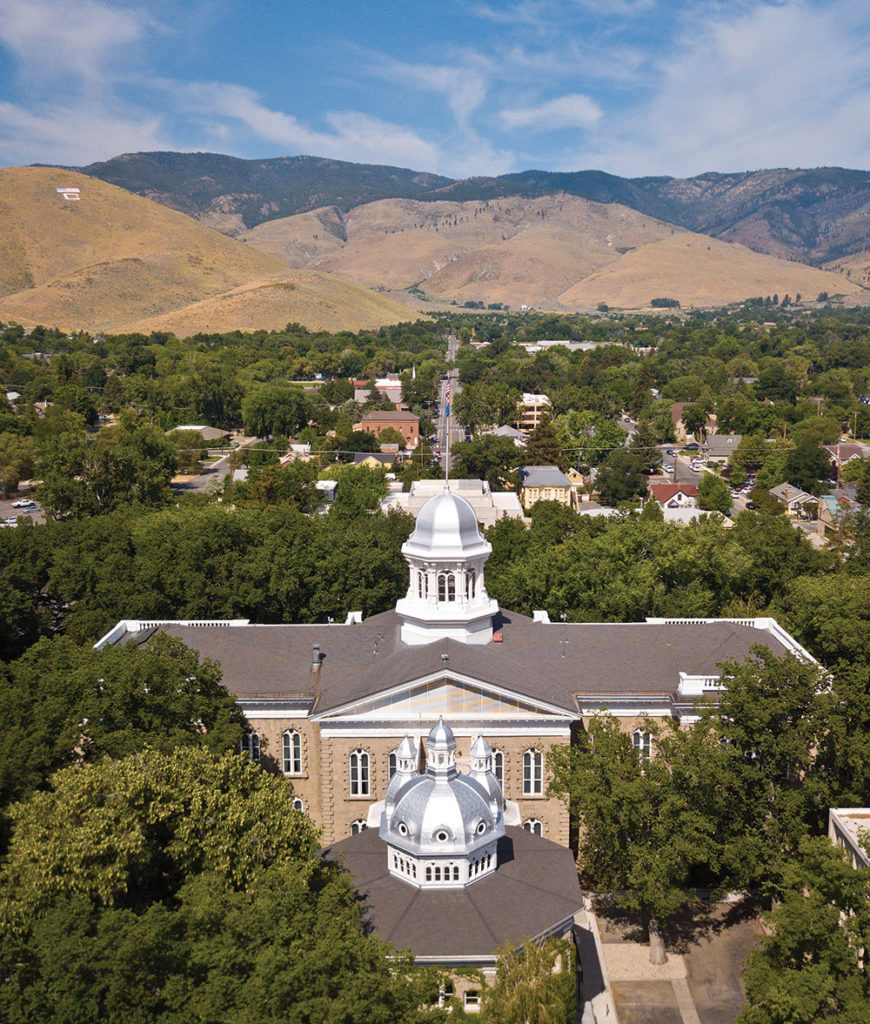
The 80th session of the Nevada Legislature is now underway, and the state’s 63 senate and assembly members meet in the building just south of the State Capitol complex in Carson City. Nevada is one of just three states where its legislature is separate from its Capitol, but once upon a time, our lawmakers crowded the hallowed halls of the Capitol building.
Today, the State Capitol provides the offices of the governor, lieutenant governor, and secretary of state, among others, and is also home to one of the state’s best and often overlooked tours. Not only is the building’s history available to visitors, but so is a deep and personal look at Nevada’s governmental history from its very beginning.
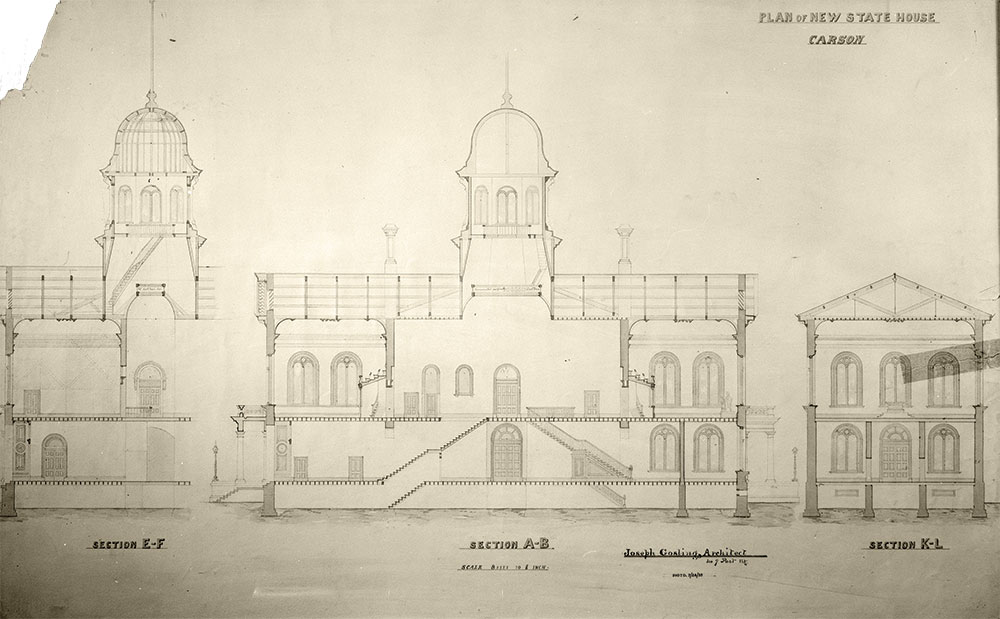
BUILDING BLOCKS
Nevada became a state in 1864, but it took legislators another five years to pass the act that would provide funding to build our State Capitol. Prior to that, legislators met at Abe Curry’s nearby Great Basin Hotel.
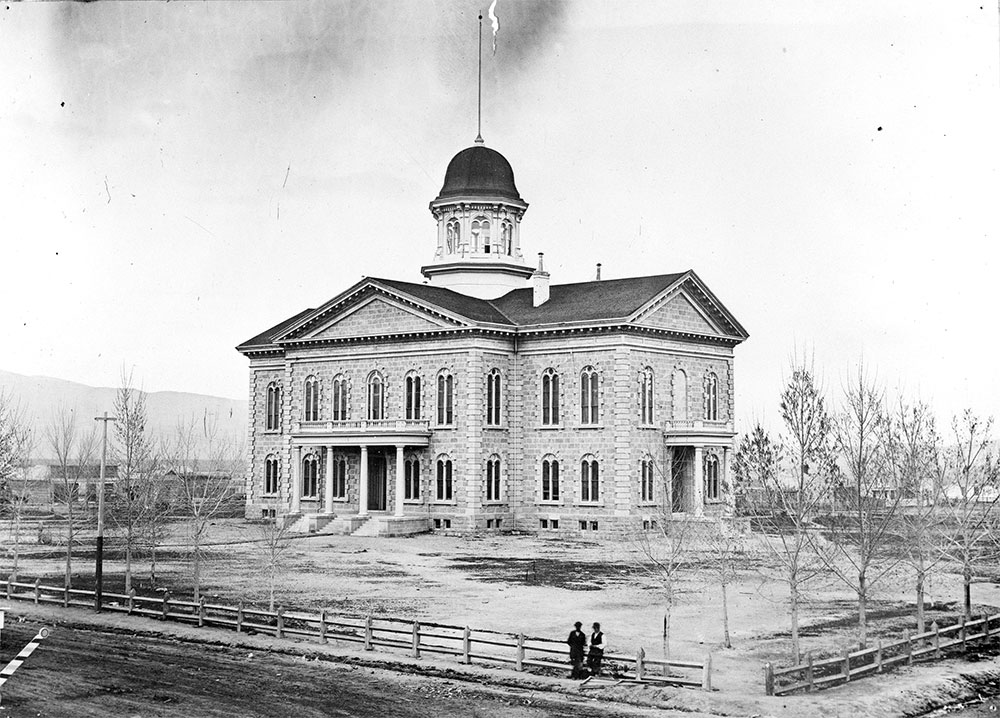
Once the act passed the legislature, plans for the new Capitol were designed by Californian Joseph Gosling and Carson City company Peter Cavanaugh & Son came in with the lowest bid for construction at $84,000. Sandstone was quarried at the nearby Nevada State Prison for the exterior, and the final cost was more than double the original bid, with an additional $20,000 spent on furnishing the new Capitol, which was completed May 1, 1871.
Additions were added over the years, the first occurring in 1905, when an octagonal building was added to serve as its library. In 1913, famed architect Frederick DeLongchamps designed additions for the building’s north and south wings.
One very brief feature of the Capitol’s exterior was a red dome. For just a few years, according to former state historian Guy Rocha, the dome was painted with “Princess Red” fireproof paint. Perhaps to cut maintenance time or maybe to further promote our nickname, the tin-covered dome was soon painted silver and remains that way today.
As is the case with all buildings, age crept up on the Capitol, and talk of demolishing the building began as soon as the 1940s and continued to be debated until a major renovation occurred in 1977. While structural issues were the main concern—three engineering firms concluded it was a “structurally unsound, public safety hazard”—it was determined the building should be rehabilitated not destroyed.
The exterior of the building was shored up with scaffolding, and the roof was removed along with much of the interior details. The interior stone walls, for example, were bolstered by first removing the stone, adding a reinforced concrete shell, and then restoring the original stone.
During the renovations, the original elliptical dome which housed a cupola observatory was sealed over. The open dome provided light and ventilation but it also housed bats which were known to swoop down on folks whenever they pleased.
It took four years to complete the renovations, and the cost was almost $6 million.
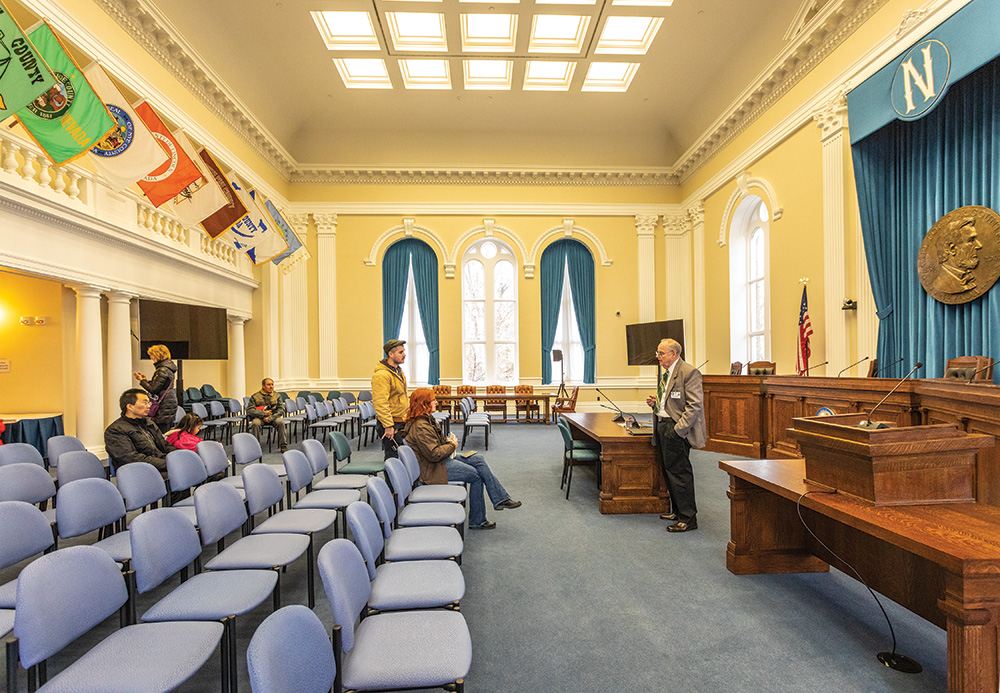
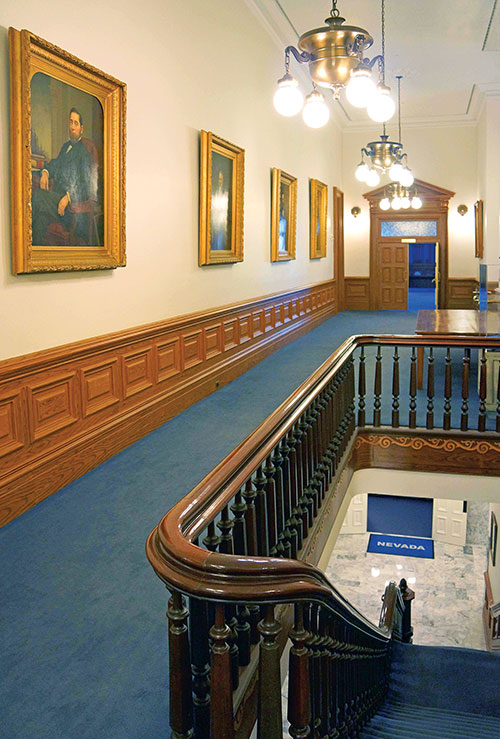
STEP INTO HISTORY
Inside the Italianate structure, our governor oversees business of state, and on any given day can be seen in the hallways, along with other elected officials. Visitors may catch a glimpse of Nevada’s lawmakers as they visit the original Assembly chambers, which when not in use, are open to the public.
While the Assembly no longer meets there, the chambers are used for meetings and special events. The room was recently refreshed with new paint and carpet, plus now the flags of all 17 Nevada counties proudly wave above the back wall where a spectator gallery once was.
The Nevada Supreme Court used to hold its sessions in the east wing of the building, and today that room contains three restored chairs behind the original bench, along with an original lawyer’s table visitors can sit at.
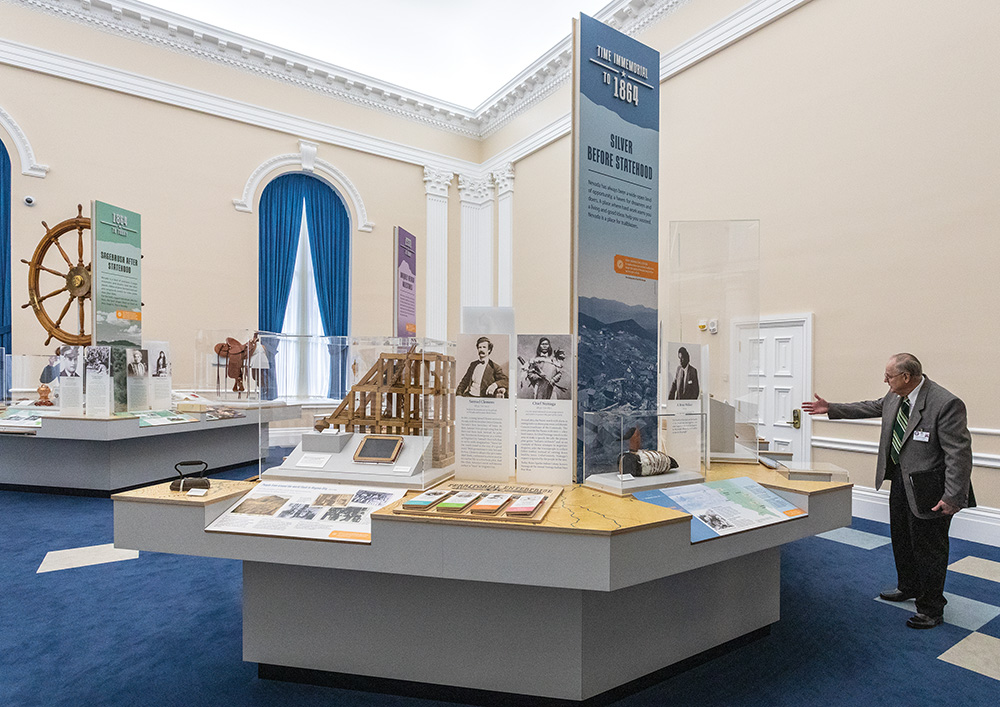
In the old Senate chambers—now called Battle Born Hall—a new exhibit debuted in October 2018. A museum had existed in the chambers for many years, but it was severely dated and in need of an upgrade. The new exhibit has interactive features and covers the state’s native people and their contributions; the early pioneers and the mining that brought the state to prominence; the rise of gaming; and much more. The new museum is designed to be touched, tested, and tried out.
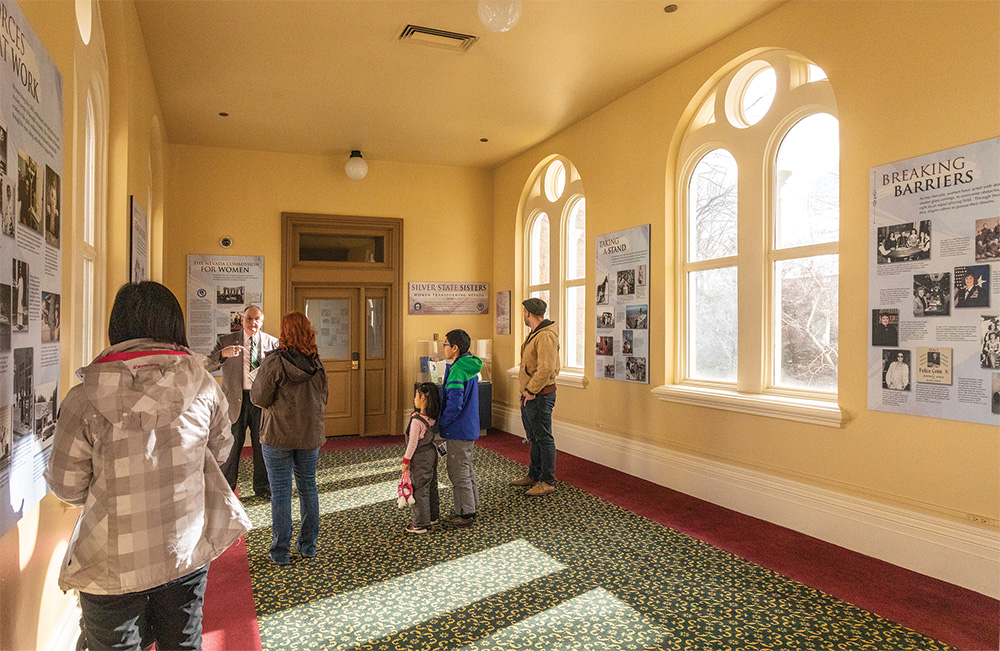
Also in 2018, the Nevada Commission for Women unveiled an exhibit in the breezeway on the second floor that honors women—both historical and present—in Nevada. The exhibit is titled “Silver State Sisters; Women Transforming Nevada,” and includes Hannah Clapp, who in 1875, won the bid to install the iron fence that surrounds the Capitol. Recent female legislators and other prominent women are also included in the exhibit.
Guided tours are truly the best way to explore the building. Docents from the Nevada State Museum’s Education Program are full to the brim with facts and figures, plus more than a few stories of life behind the scenes for our early politicians. Details about the black walnut banister and the wainscoting that looks like oak, but is actually pine with a faux finish are sprinkled throughout the tour. The details of the building seem endless, each more interesting than the last.
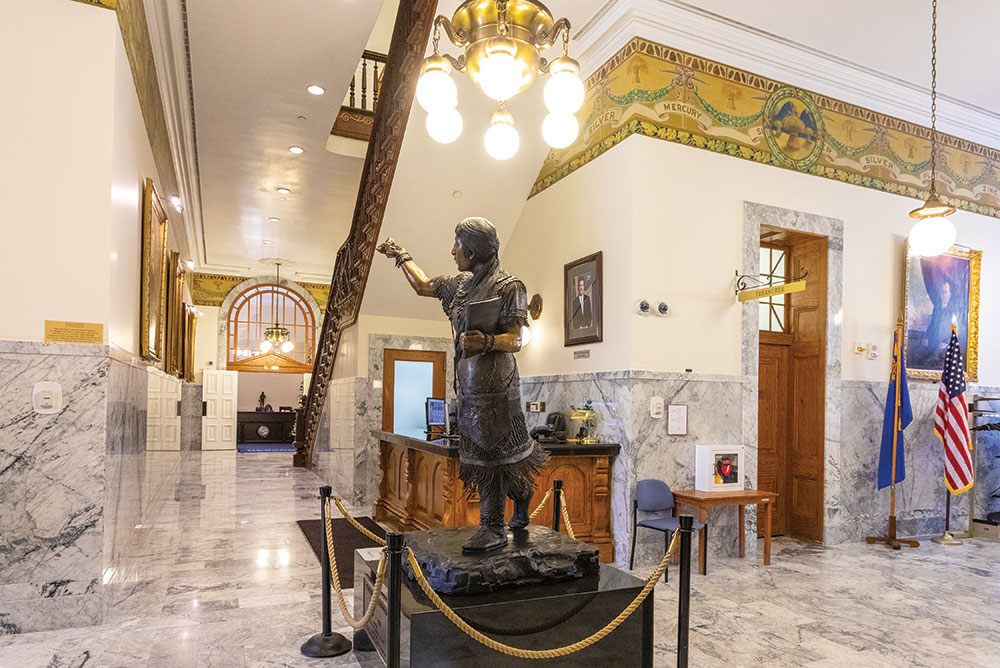
There’s a 400-foot frieze along the top of the first-floor walls that was added in 1917 and Alaskan marble floors that came along that same year. A bronze statue of Paiute author, activist, and educator Sarah Winnemucca sits in the center of the building. A massive safe sits in an office, just as it has since 1871. Paintings of each of Nevada’s governors adorn the walls of both the first and second floor, along with a painting of Isaac Roop, the territorial governor who served from 1859-1861.
Around each corner, there is something to see that reveals an intimate glimpse into Nevada’s governing history. Wandering through the halls—whether on a tour or alone with just an informational pamphlet—a sense of how the Battle Born state was shaped and governed is immediate and personal. Not just for history buffs but anyone who loves the Silver State, a visit to Nevada’s State Capitol is a capital idea.

